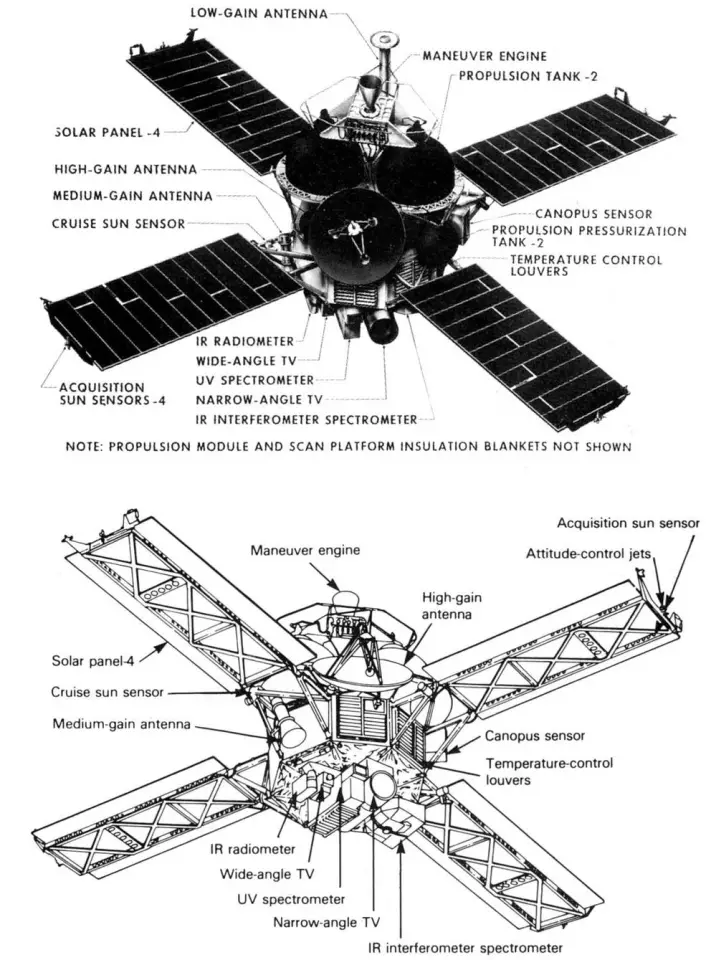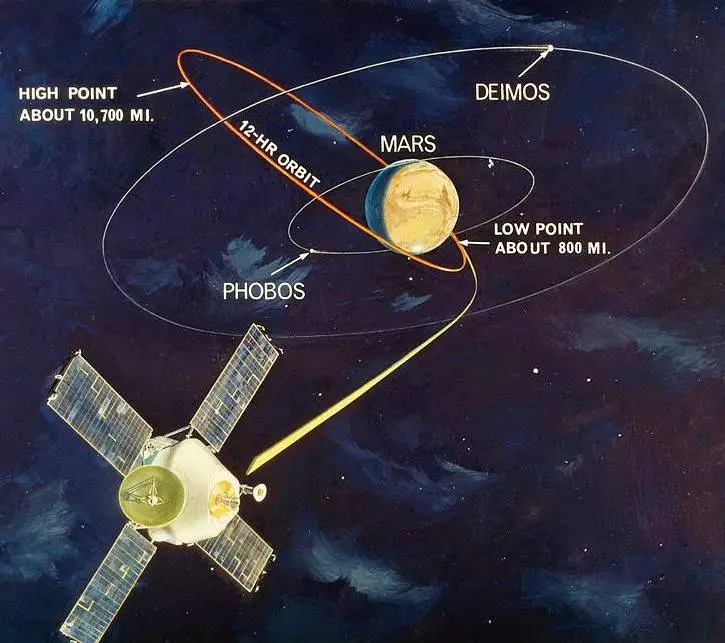Fifty years ago this weekend, on November 14, 1971, NASA's robotic Mariner 9 probe went into orbit around Mars. This was not only the first time a spacecraft orbited another planet, but also one of the few early missions to avoid the infamous Curse of Mars.
There are currently 13 uncrewed missions operating on the surface of, or in orbit around, the Red Planet, making it the solar system equivalent of Piccadilly Circus. This is both a remarkable technological achievement and the basis for widespread misconception.
In the public imagination, Mars has become increasingly regarded as a benign place, and getting to it is as routine as a transoceanic flight. As a result, people talk casually about colonizing Mars as a relatively simple matter, something that could be accomplished in a couple of years if only the money and the will was available.

The reality is far harsher. Mars is an extremely hostile place by Earth standards. Aside from an incredibly thin atmosphere, corrosive soil, freezing temperatures, no protection against UV or cosmic radiation, and a lack of water that makes the Atacama Desert look like the Garden of Eden, just getting to the planet is still so hazardous that every arrival is greeted by space engineers with a sincere sigh of relief.
Despite this, it's surprising how quickly the first missions to Mars were launched. The first artificial satellite was launched into Earth orbit by the Soviet Union in 1957, and on October 10, 1960 with the Mars 1M No. 1. it was already sending up its first Mars probe – although it never reached orbit.
The reasons for this rapid expansion were twofold. First, the Soviet leaders regarded spaceflight as having little or no practical value – aside from taking reconnaissance photos of the West – so space missions were only useful as propaganda stunts and the space program was expected to chalk up as many firsts as soon as possible, including getting to Mars.

The second reason is the paradox of space technology. Though the spacecraft and launchers of the day were primitive by today's standards, rocket technology was already incredibly advanced by 1960. In fact, by the time that the first German V-2 rockets shot into space in the 1940s, the engineers were already working at the theoretical limits of chemical rockets.
This meant that the Soviets and the Americans already had the rockets to get at least small probes to Mars, but getting there successfully was another problem. In all, over 50 percent of all missions over the past 60 years have failed either partly or completely, a success ratio referred to with only partial humor as the "Curse of Mars."
By the time Mariner 9 reached Mars, there had already been 20 missions launched. Of these, 15 were failures or partial failures where the craft stopped operating almost immediately, and five were successes. Two of these were Soviet missions that launched before Mariner 9, but arrived after it thanks to the vagaries of celestial mechanics, and the three NASA probes, Mariners 4, 6 and 7.

Even Mariner 9 was a bit of a crap shoot. Originally, it was supposed to be a two-spacecraft mission along with Mariner 8, but that one was destroyed in a launch failure and NASA had to scramble at the last minute to modify the 997.9-kg (2,200-lb) Mariner 9 and its Atlas/Centaur booster before its May 30, 1971 launch as a solo mission. Luckily, this launch went off so smoothly that Mariner 9 was almost exactly on track and didn't even need a course correction on its journey to Mars.
To add to the uncertainty, the previous Mariner missions had cast a pall over the entire point of going to Mars. Up until then, the opinion was that Mars was Earth-like enough that there was a very good chance that it could sustain some form of life. True, the old idea it was home to a dying race that survived by using great canals to bring water from the poles to the equator had been dismissed, but even when a scientist said that Mars was dead, the implication was that the planet still could have mosses, lichens, and maybe grass or even small animals.
If anyone found those today, it would be an automatic Nobel Prize.

What now seem like purely sci-fi hopes were dashed by the first three Mariner probes, which were flyby missions that visited for only an extremely brief time with very slow, primitive digital cameras capturing images from a distance of more than 2,000 miles (3,200 km). These probes passed over the most desolate parts of Mars, where they sent back pictures of a surface strewn with craters like those on the Moon. Far from being the home to alien rodents, Mars looked like a very dead world.
But Mariner 9 had massive surprises in store. At first, Mars was a frustrating subject for study. A planet-wide dust storm was raging and the orbiter's computer had to be ordered to shut down the cameras for months until this cleared. When the clouds cleared, the probe resumed its survey and with great slowness it sent back 7,329 images covering 85 percent of the surface captured over 349 days in orbit. These images had to be printed out in hard copy and then stitched together by hand.
What the scientists saw revolutionized our ideas about Mars and in turn the whole field of planetary science. Mars turned out to be a remarkably dynamic planet, with winds that pushed shifting dune systems about. There were also signs of geological activity on a massive scale, some billions of years ago.
The probe's cameras revealed the Valles Marineris canyon system, named after Mariner 9, which is a giant rift valley that could swallow the Grand Canyon without a burp. Then there was Olympus Mons, the largest volcano in the solar system and three times the size of the largest volcano on Earth. In addition, there were the great empty sea beds of the Martian plains that stretched for thousands of miles.
But the most existing discoveries were what looked like ancient lakes and river beds. There were also flood plains and many other features that suggested that at one time Mars may have had abundant water. Water means potential life. If not today, but maybe sometime in the past. Almost immediately, this re-sparked public and professional imaginations about Mars.
By the time Mariner 9 had exhausted its supply of propellant for its attitude thrusters and was shut down on October 27, 1972, scientists were once again speculating on what kind of life might be found on Mars and they were updating the planned Viking landers to include the first experiments aimed at discovering signs of life on another world.
It's a task that humanity is still pursuing and dreaming about, even if it means facing the Curse of Mars.








